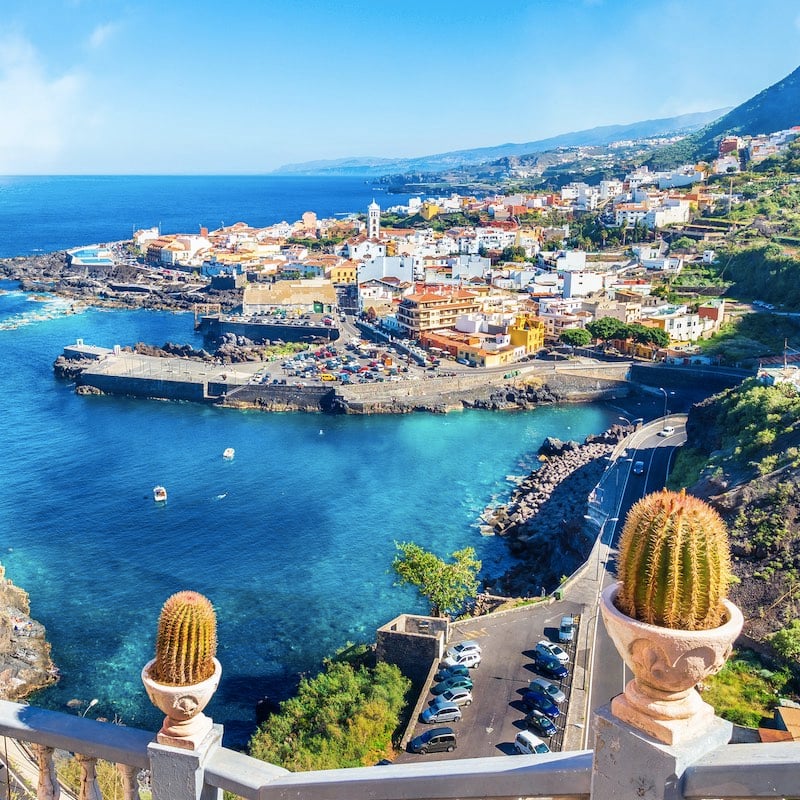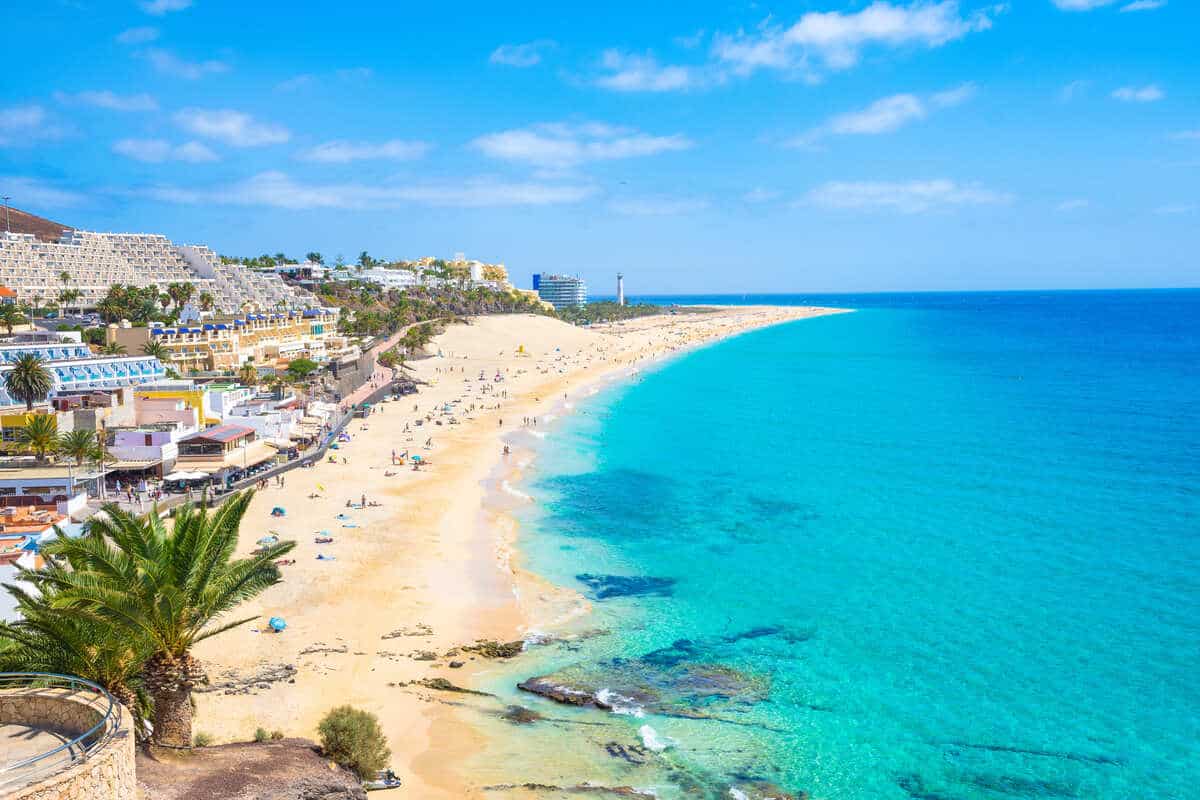Following in the footsteps of Los Cabos and Mexico City, yet another sunny destination is joining Airbnb’s ‘Live and Work Anywhere’ program to attract more digital nomads in 2023. As Airbnb itself describes it, their latest addition is perfect for slow travelers and remote workers seeking some ‘sea, sun and adventure’.
Digital nomadism is, arguably, the number one travel trend post-Covid, and a movement that keeps growing as more national governments warm up to the idea and begin relaxing their strict immigration rules. This year, over 45 countries are offering residence permits for country-hoppers, including some of America’s favorite vacation hubs in Latin America.
Being the world’s leading platform for long-term rentals, AirBnB has a key role to play in advancing the ‘nomadic’ cause, and it’s doing so masterfully:
Sea, Sun, And Adventure Off The Western Coast Of Africa

After teaming up with some of Mexico’s top coastal destinations, including the trendy Los Cabos, Airbnb is turning its attention to the Eastern Hemisphere. More specifically, a massively popular ‘winter sun’ destination offering mainland Europeans year-round warmer weather, but that has been historically overlooked by a wider American public.
‘How would you like to go surfing on your lunch break?‘, ‘Or end your working day with a mountain hike?‘ are a couple of the questions AirBnB poses to sun-seeking nomads ahead of unveiling its new partner destination: the Canary Islands, a Spanish archipelago and autonomous community off the Western Coast of Africa.

Before going into detail as to why they are a great pick, Airbnb immediately points out the Canaries offer ‘the most hours of sunshine per year in Europe‘. Even though they are located in close proximity to the African continent, the islands are an integral part of Spain and of the European Union, and are thus culturally, ethnically, and politically European.
Incredible Weather All-Year Round
Considered the land of eternal spring, temperatures across the insular communities reach highs of 20° degrees Celsius during the peak of winter. In other words, in islands like Tenerife and Gran Canaria, it’s never not shorts weather. The same cannot be said about other southern European markets, where the weather is only pleasant enough over summer.
In Mykonos, for instance, one of Greece’s most sought-after summer islands, temperatures drop to 9° degrees in January. In Dubrovnik, Croatia’s famous walled city facing the Adriatic Sea, it can be as low as 7° degrees with the occasional snowfall, and even the French Riviera, which sees summer highs of over 30° degrees, will feel rather chilly in winter at 9°.

The Canaries, on the other hand, always provide incredible weather, and unless you’re into adventure and will be hiking the Highlands of Fuerteventura, or going further inland in any of the islands, where it’s generally more mountainous, your only inconvenience over winter, weather-wise, should be light rain showers…
If any at all.
The Canaries Are Some Of Spain’s Most Metropolitan And Developed Islands

Airbnb also mentions ‘great’ connectivity and ‘affordable living’ against a backdrop of ‘stunning beaches’ and nature. All across the Canaries, there are hiking, cycling, and running trails, making the Spanish region one of Europe’s adventure capitals, as well as small coastal towns with a laid-back atmosphere and a wellness-driven culture.
Meanwhile, those who do not necessarily want to unplug and explore nature and who are looking instead for a vibrant environment where they will be able to socialize and meet other travelers will not be disappointed. Despite being a remote collective of islands, the Canaries are the most populous special territory of the European Union.

There are over 2.2 million inhabitants living across seven major islands:
- Tenerife
- Fuerteventura
- Gran Canaria
- Lanzarote
- La Palma
- La Gomera
- El Hierro
Every island has its own distinct culture, climate, and character. While Tenerife and Gran Canaria concentrate the majority of the population (43% and 40% respectively) and are both well-developed urban zones, places like La Gomera and La Palma, with less than 100.000 inhabitants each, offer an escape from the hustle and bustle of the larger surrounding islands.

The Best Islands For Young Nomads
AirBnB’s top four island picks for nomads considering a move to the Canaries are the following:
- Tenerife, ‘fantastic’ for outdoor activities, beaches, and home to a growing international community of workers
- Gran Canaria, where guests can find a diverse natural landscape, from sand dunes to pine forests and a gorgeous coastline
- Fuerteventura, the postcard island for white sandy beaches and turquoise-colored oceans
- Lanzarote, dotted with Mediterranean-style whitewashed houses and home to active volcanoes and golden sand beaches
Naturally, the best islands to be based as a young nomad are Tenerife, Gran Canaria, Fuerteventura, and maybe Lanzarote: they offer excellent internet broadband connection, and some of them even have co-working spaces shared by nomads and local workers alike. Additionally, Tenerife and Gran Canaria rank among Europe’s top LGBTQ+ friendly destinations.

Great Flight Connectivity And Affordable Rent
Needless to say, these islands offer flight connections to an extensive list of destinations both in mainland Spain and Europe – this means you’ll be a short three to four-hour flight away from other sunny hotspots like Barcelona, Malaga, and Seville (in Spain), and countless bucket-list European cities, with London, Paris, and Zurich to name a few.
Seeing potential in the Canaries, this year, United Airlines launched the inaugural flight between the U.S. (Newark) and Tenerife. Available seasonally with a three-times-a-week frequency, the route proved successful upon its debut back in June, and we expect it to re-open in summer 2023 as Tenerife continues to grow in the American market.
Airbnb prices are pretty affordable as well: nomads on a budget will be able to find single rooms for as little as US $700 per month in Arrecife, the capital city of Lanzarote. In any of the larger islands, such as Gran Canaria or Tenerife, entire apartments are available monthly between US $1000 and US $1500.
Of course, it all depends on the list of amenities and location.
Are Digital Nomad Visas Available For Americans Moving To The Canary Islands?
When it comes to Digital Nomad Visas, Spain is set to launch its own residence permit enabling nomads to remain in the national territory for up to five years. At this time, we do not have any official information on the criteria applicants will be required to meet, including the financial threshold or background checks.
The ‘Digital Nomad’ law has been recently passed by the Spanish Parliament as part of a wider package titled ‘The Startup Act’. It paves the way for the de-bureaucratization of entrepreneurship in Spain, including the launch of DNVs. Details are yet to be finalized, but Euronews has noted the visa could be formally introduced in January next year.
Currently, Americans are only allowed to remain in Spain, and the wider Schengen Area, for up to 90 days out of any 180-day period. They can do so without applying for a visa in advance as tourists, but those caught overstaying usually face heavy fines and even potential multiple-year entry bans for Spain, the European Union, and its associates.
Covid travel rules are no longer enforced by Spanish authorities.

